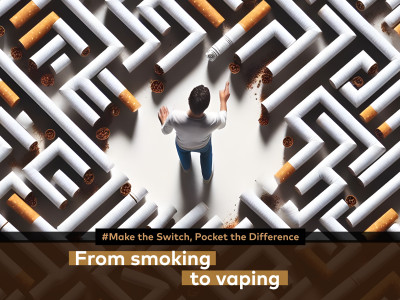The sweaty palms of a Daily Telegraph reporter hit CTRL-C/CTRL-V and sent “The study of menthol and peppermint vapes revealed high concentrations of a carcinogenic additive called pulegone that US watchdogs recently banned in food” out into the ether.
In their paper, Jabba and Jordt concluded: “Our analysis suggests that users of mint- and menthol-flavoured e-cigarettes and smokeless tobacco are ex- posed to pulegone levels higher than the FDA considers un- acceptable for intake of synthetic pulegone in food, and higher than in smokers of combustible menthol cigarettes.”
Simon Capewell, professor of public health at Liverpool University, can always be relied upon to make some inane comment on matters relating to vaping. He told the Telegraph: “How many warning shots do the government need before it pauses to reconsider it’s [sic] gung-ho policy? It seems every week we are getting new publications from independent researchers demonstrating additional risks from e-cigarettes. Some of these flavours are proven carcinogens.”
What Capewell is still to appreciate is that you should only comment on something that you understand and has substance. Jabba and Jordt failed to provide any indication to JAMA Internal Medicine on their funding for the study, so claims of “independent” are a leap of faith.
Then there is the work itself.
Professor Paul Aveyard, Professor of Behavioural Medicine at University of Oxford, said: “This study is purporting to show that vapers are consuming worrying levels of pulegone by examining the concentration of pulegone in e-liquids and cigarettes, but it is not possible from this to assess whether people who vape menthol flavours have excess exposure to pulegone.”
“A study to examine whether there is a concern would measure pulegone concentrations in people who vaped, but the authors have not done this. The study seems to have reported on the pulegone concentration in e-liquids, making the unjustified assumption that all the pulegone in the e-liquid is absorbed.”
“We know, for example, that nearly all the nicotine in e-liquid is not absorbed either from cigarettes or from e-liquids and it is likely that most pulegone is not absorbed, as most of the vapour from e-cigarettes is exhaled.”
Dr Lion Shahab, a Senior Lecturer in Epidemiology & Public Health at University College London, has extensive experience in vape-related research. After reviewing the paper, Dr Shahab said: “This paper uses previously published data to evaluate the likely exposure of users of menthol-flavoured e-liquids to pulegone, a constituent extract from mint plants used as a food and flavouring additive that is classified as possibly cancer-causing to humans. It finds that users of menthol e-cigarettes are likely to be exposed to levels considered to require mitigation strategies. This paper highlights the importance of evaluating e-cigarette specific constituents that are not necessarily seen in conventional cigarettes as well as the continued need to monitor and, if necessary, restrict toxic flavouring agents in e-liquids.”
But, “the findings are, however, limited for a number of reasons. The study did not assess actual exposure in humans which is important because exposure is not simply a function of e-liquid constituents but also of the interaction between users and how they use e-cigarettes to warm up the e-liquid. Further, the data used to derive the likely exposure profile comes from a limited number of e-liquids assessed more than five years ago; it is therefore unclear if results apply to products used nowadays. Lastly, there are no studies which have linked the constituent considered here, pulegone, to cancer in humans.”
“By contrast, based on numerous studies of e-liquids, aerosols and actual exposure in humans we know that the level of exposure to constituents known to cause cancer in humans is magnitudes of order lower in e-cigarette users than in smokers. The results reported in this study need to be considered in this context.”
Related:
- “Risk Analysis for the Carcinogen Pulegone in Mint- and Menthol-Flavored e-Cigarettes and Smokeless Tobacco Products” by Jabba and Jordt – [link]
Photo Credit:
Images - Pixabay
Dave Cross
Journalist at POTVDave is a freelance writer; with articles on music, motorbikes, football, pop-science, vaping and tobacco harm reduction in Sounds, Melody Maker, UBG, AWoL, Bike, When Saturday Comes, Vape News Magazine, and syndicated across the Johnston Press group. He was published in an anthology of “Greatest Football Writing”, but still believes this was a mistake. Dave contributes sketches to comedy shows and used to co-host a radio sketch show. He’s worked with numerous vape companies to develop content for their websites.
Join the discussion
Expert Reaction to Pregnancy Study
Experts have reacted to the QML study of impacts of vaping in pregnancy and comparison with smoking
Study: Vapes Help Pregnant Quitters
A new study from Queen Mary University of London finds that vapes help pregnant smokers quit and pose no risk of poor pregnancy outcomes
IBVTA responds to UCL study
The Independent British Vape Trade Association has responded to University College London research and said the findings show the Government’s smoke-free ambition is stalling
Cochrane Review Echoes Swedish Success
The Cochrane Review echoes the Swedish approach, finding less harmful alternatives like vaping are superior to other quit methods, says Smoke Free Sweden












